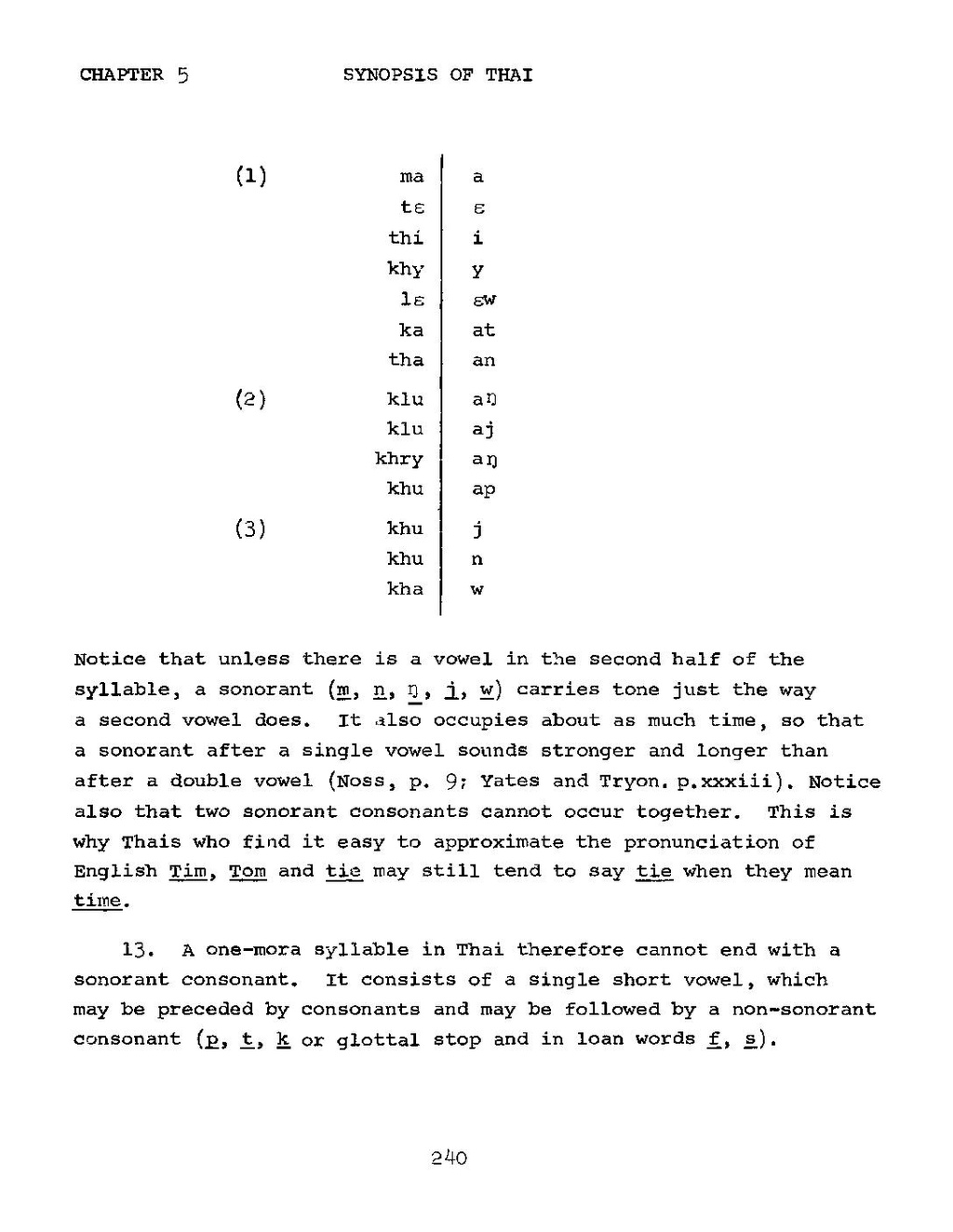| (1) | ma | a |
| tɛ | ɛ | |
| thí | í | |
| khy | y | |
| lɛ | ɛw | |
| ka | at | |
| tha | an | |
| (2) | klu | aŋ |
| klu | aj | |
| khry | aŋ | |
| khu | ap | |
| (3) | khu | j |
| khu | n | |
| kha | w |
Notice that unless there is a vowel in the second half of the syllable, a sonorant (m, n, ŋ, j, w carries tone just the way a second vowel does. It also occupies about as much time, so that a sonorant after a single vowel sounds stronger and longer than after a double vowel (Noss, p. 9: Yates and Tryon.p.xxxiii). Notice also that two sonorant consonants cannot occur together. This is why Thais who find it easy to approximate the pronunciation of English Tim, Tom and tie may still tend to say tie when they mean time.
13. A one—mora syllable in Thai therefore cannot end with a sonorant consonant. It consists of a single short vowel, which may be preceded by consonants and may be followed by a non-sonorant consonant (p, t,k or glottal stop and in loan words f, s).
240
